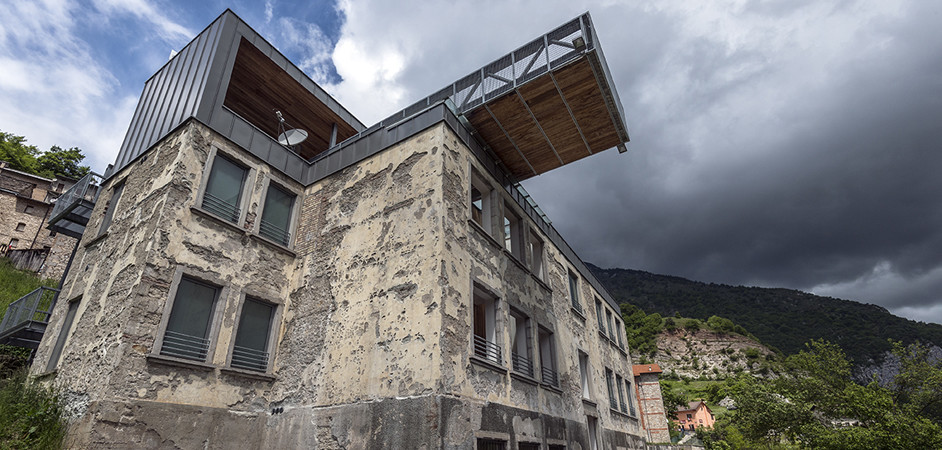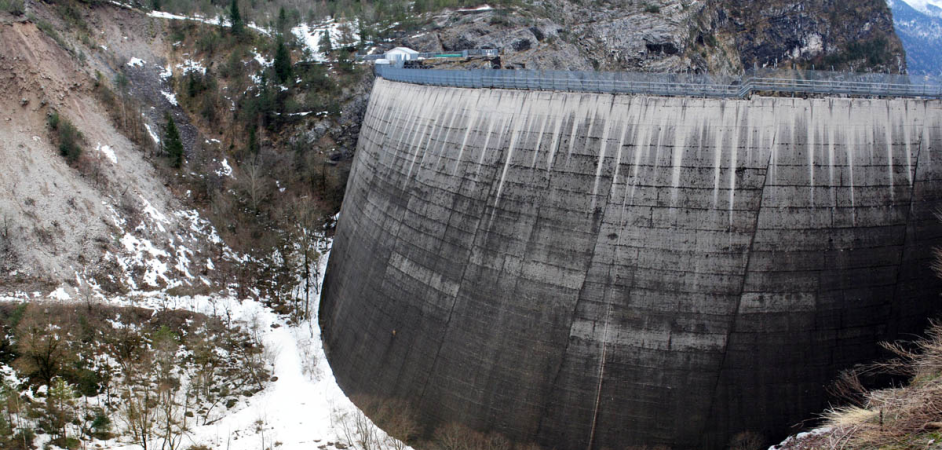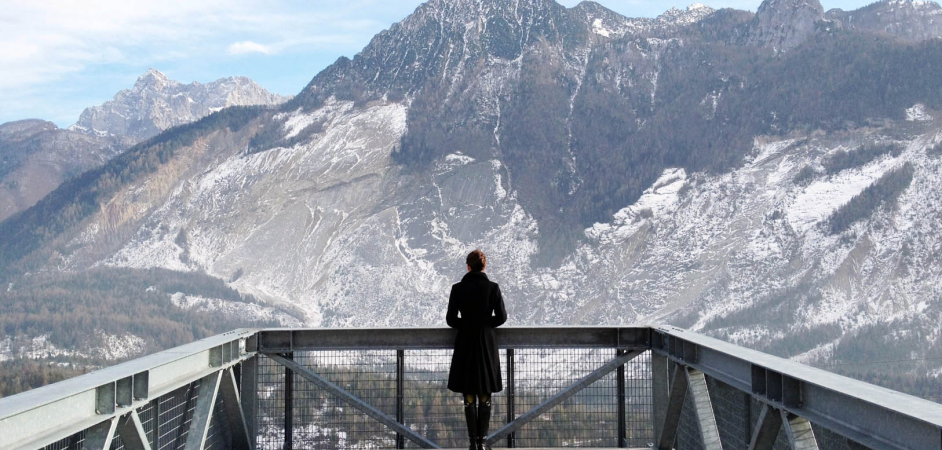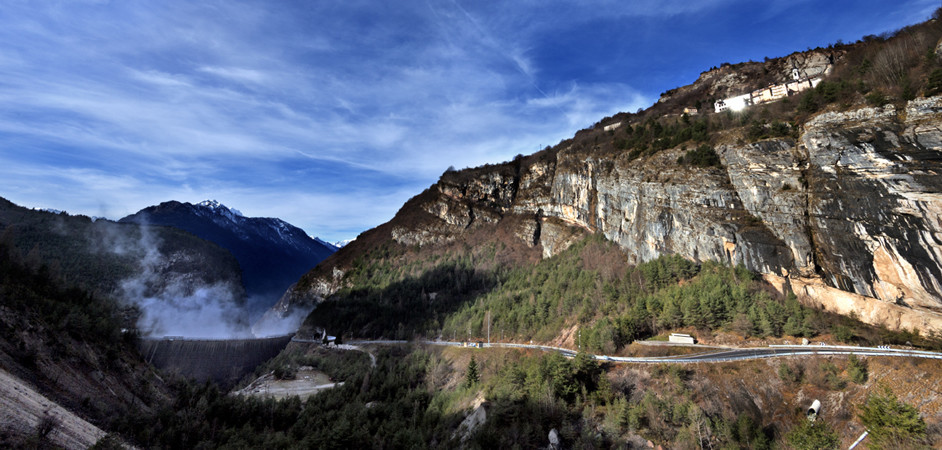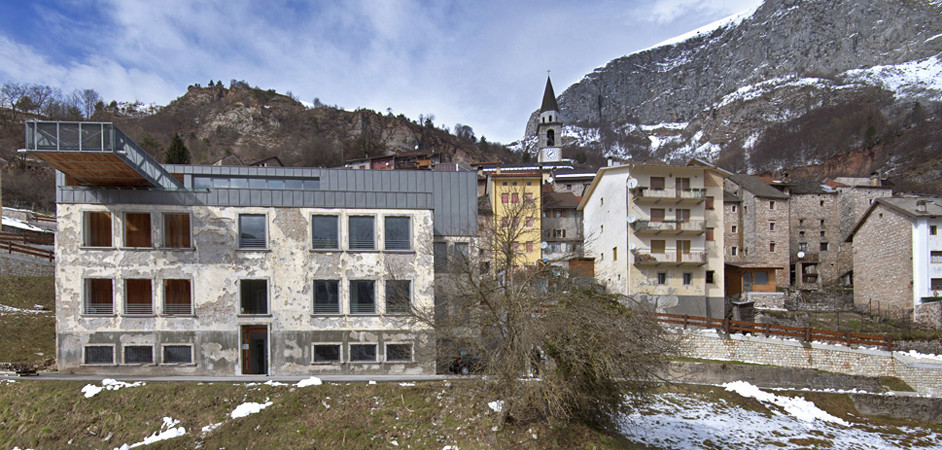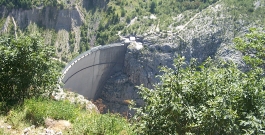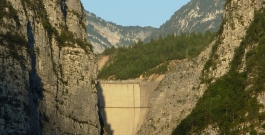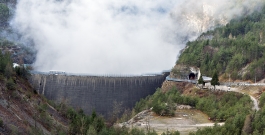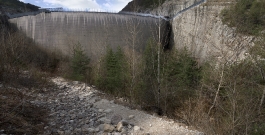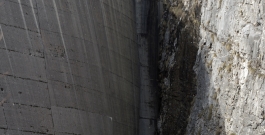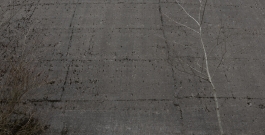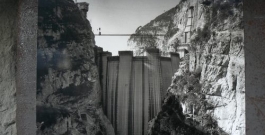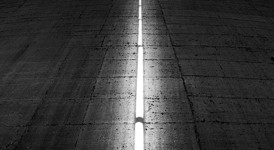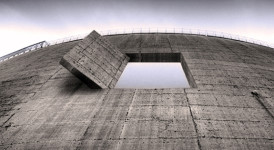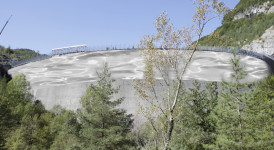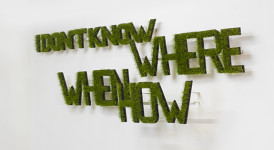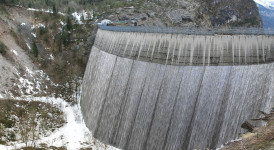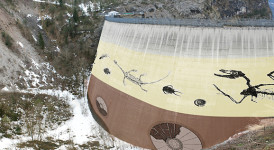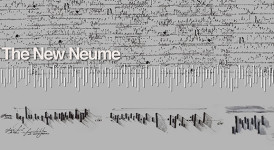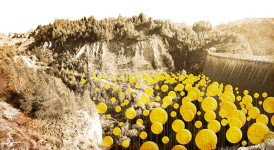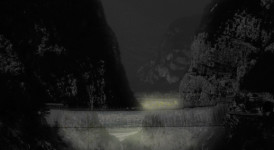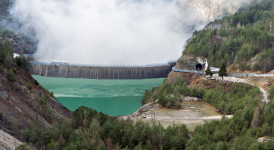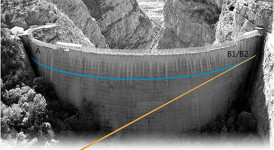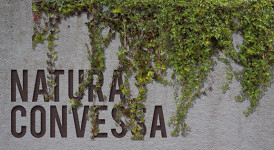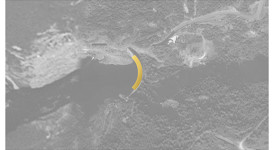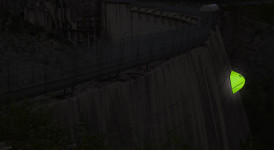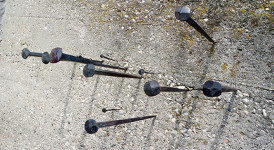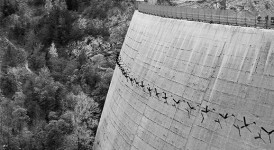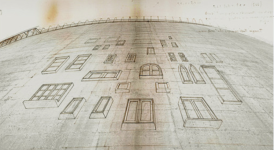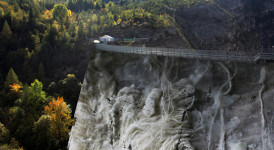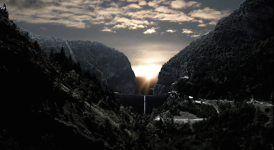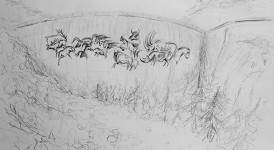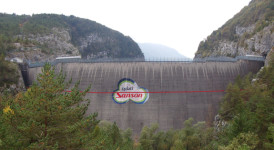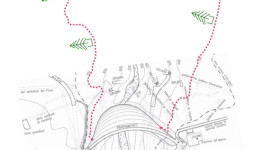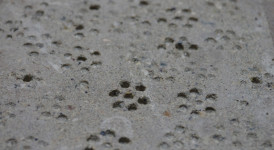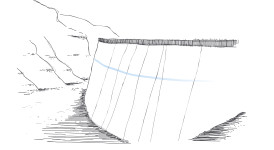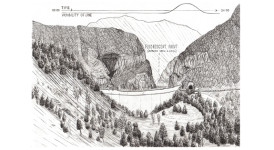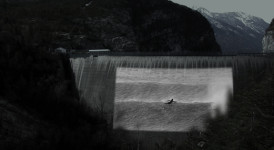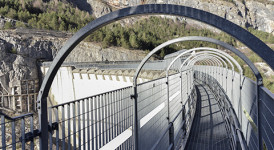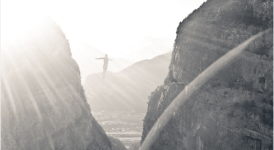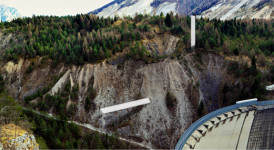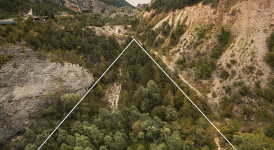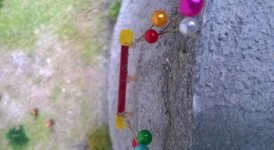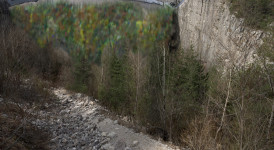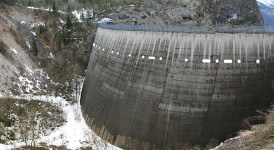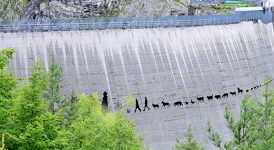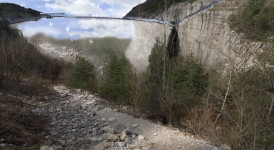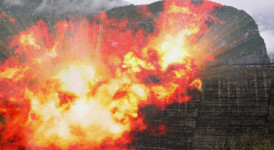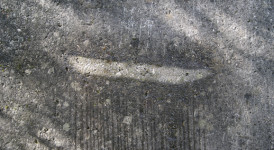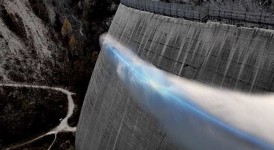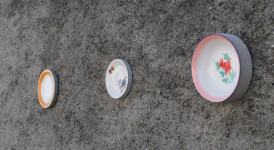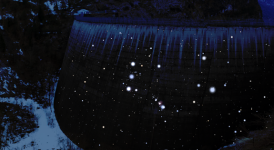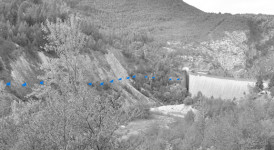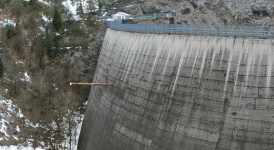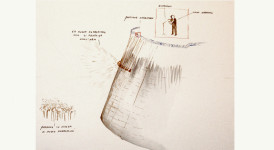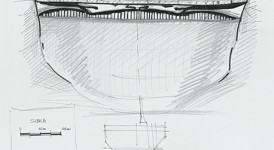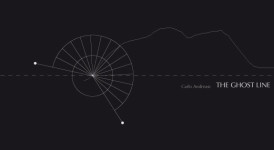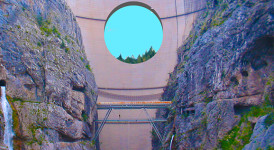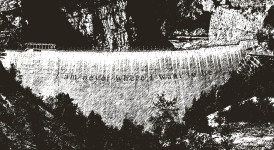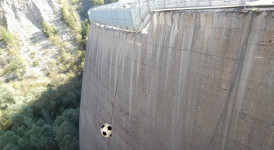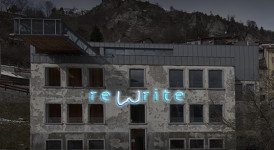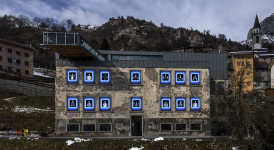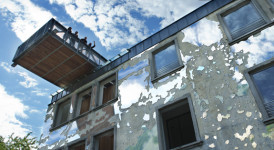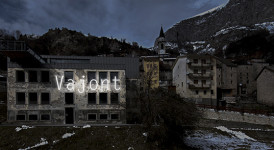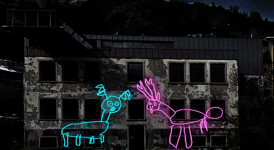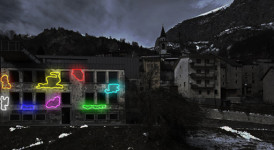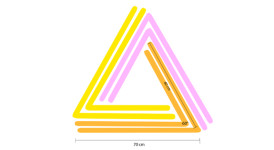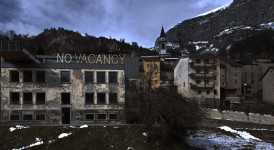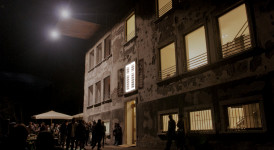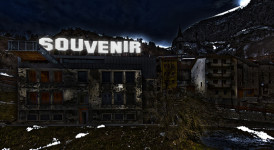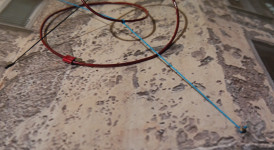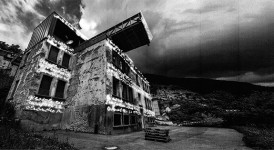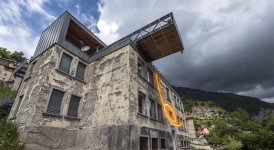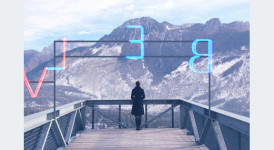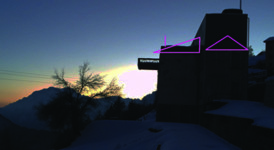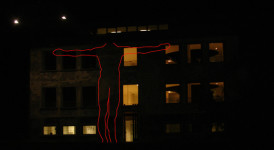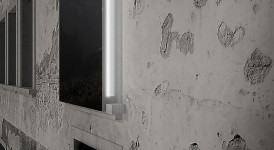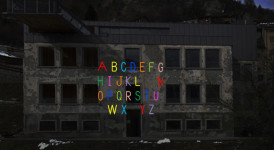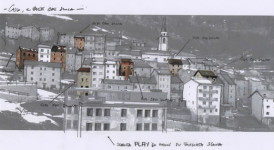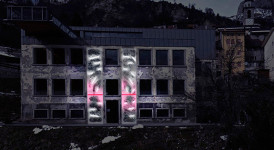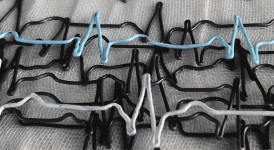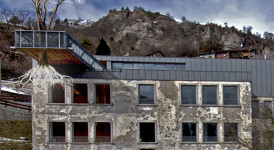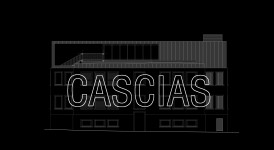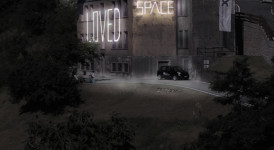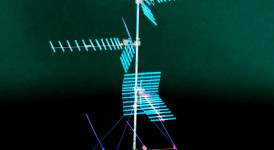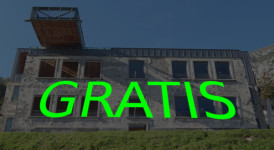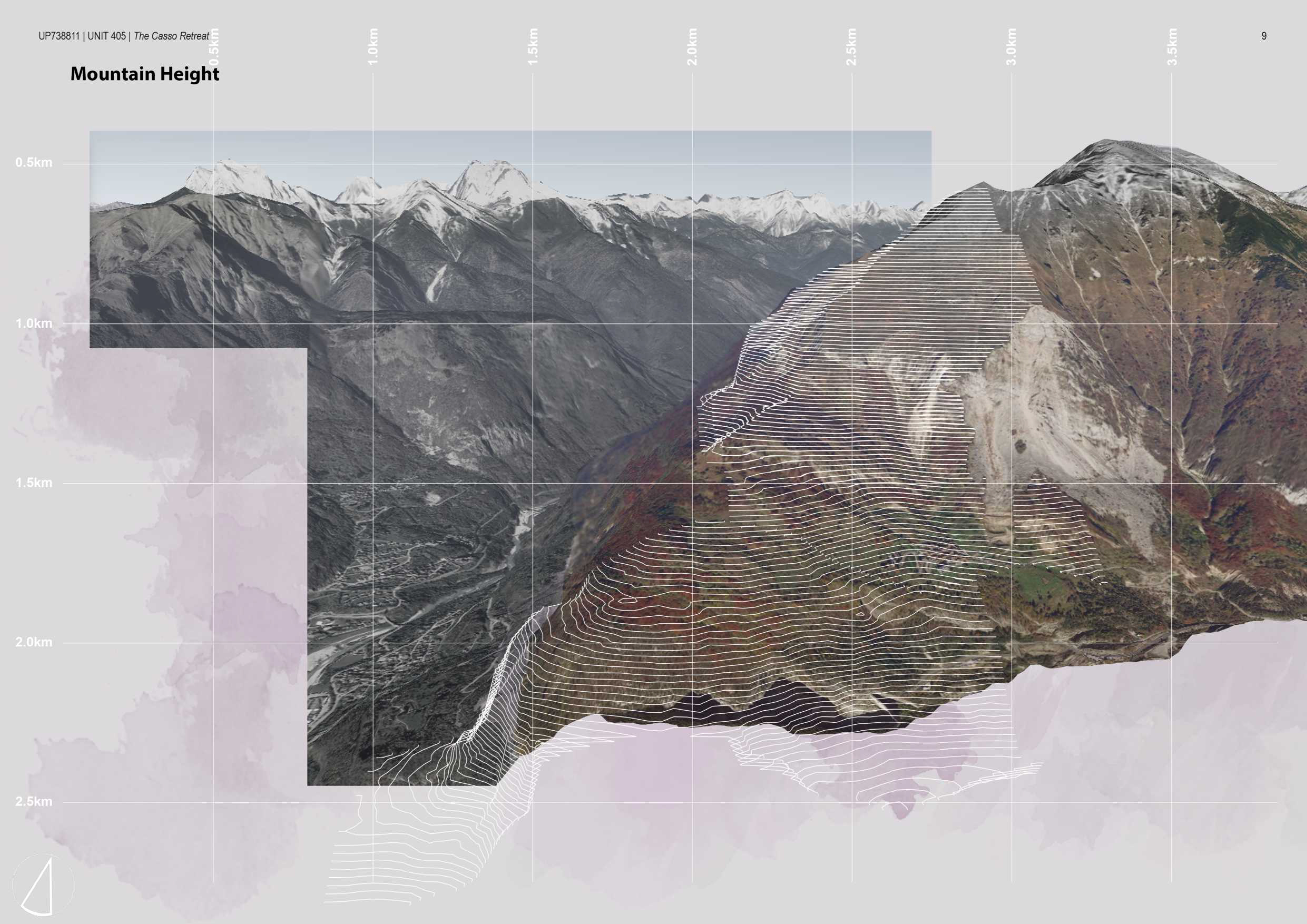a call for a line: about
twocalls involves two individual contests, with two different planning sites. the friulian side of the vajont dam is the working site of a call for a line.
for more than fifty years the dam couldn’t be anything more than a closed and static place, symbol of death. now, finally, it’s going to move forward; in meaning, and shape. the artists will have to plan a permanent artwork, which is going to mark the level of the water inside the artificial basin in 1963. the water level was, back then, twenty meters below the crowning. it is a line about 180 meters long, that unravels itself along the convex arch of the cement wall.
________________________________________
twocalls prevede due singoli concorsi, con due differenti siti di progetto. il versante friulano della diga del vajont è il sito-cantiere di a call for a line.
per oltre 50 anni, la diga non ha potuto essere altro che un luogo chiuso e fermo, l’emblema della morte. ora essa finalmente si sposta, nel senso, nella forma. gli artisti dovranno progettare un’opera permanente, che marcherà il livello dell’acqua all’interno del bacino nel 1963. la linea dell’acqua si trovava allora 20 metri sotto al coronamento. si tratta di una linea lunga circa 180 metri, che si svolge lungo l’arco convesso del muro di cemento.
A call for a line. Contest concerning the eastern side (the Friulian one) of the Vajont Dam
The line that is being referred to is the one that, on the 9th of October 1963 marked the water’s altitude inside the artificial basin, twenty meters below the current crowning. It is asked to the artists taking part in the Contest to create an artwork that highlights that altitude.
This artwork will be permanent.
As anybody knows, the Dam, even more than the former school of Casso’s front, is the monument that represents in an emblematic manner the tragic history of the Vajont.
This artefact, mighty bastion made of cement, the only true survivor of the Disaster of 1963, owns a huge symbolic power.
Its significance, its identity, are completely determined by that fact.
Thousands of people, every year, come to visit it. To those who participate in this silent pilgrimage, the Vajont Dam is a gigantic cement tombstone. The Dam and the line of detachment of Mount Toc’s landslide are the two enormous signs, horrified and mute witnesses, which remain as a perpetual reminder of what happened then.
Wanting to intervene directly on this artefact means having complete understanding of its meaning.
The basic belief, that is the foundation of the Contest, is that these locations (the Vajont area) shouldn’t, for all eternity, embody and represent exclusively the history of that tragedy and that is instead necessary, precisely here, to responsibly decide to say something else, to bring, precisely here, other meaningful words and images.
It is our belief that the ideas, the intellectual and creative motivations, the productive impulses, are the foremost meaning of the human life, and thus, as long as the human being will have the strength to elaborate creatively the meaning of the facts that make up its own history, terrible happenings included, this history will continue to be generated by the human being itself. no fact, of any kind, will be able to exclude it from this vital process, that the human owns, making it, indeed, human.
This is why the Memory of the fact must be in itself a productive moment. It is clear that we are talking, in this instance, of the public Memory and not of the private one: the Tragedy of the Vajont is a public happening, that concerns the whole of Humanity, and this is the dimension that concerns the Contest.
The public doesn’t have to become, or continue to be, a passive field that guards and preserves, through commemoration, a still image stuck in the past, suspending it. Memory has to, instead, be able to live as well, constituting an occasion of continuative creative processing, that is to say, in turn, of history intended as inevitable living destiny of the mankind. Memory can’t prevent history: it has to help the human, instead, to understand itself, and its destiny, which doesn’t lay in the past, but moves within the future.
Working directly and physically on the artefact of the Dam means, therefore, to responsibly be willing to take on and be proactive, in this location (to this day blocked), for a construction site of productive Memory and of cultural processing that, through the deployment of vital energies, will see over the history, commensurating to it.
Art is one of the methods that the human has to climb the meaning of things, earthly and celestial alike, clambering up among them.
Art is a tremendous instrument that links soul and wit, and produces alive images, while it doesn’t ever accept to remain closed. Art is enthusiasm and openness: that is why art is now coming to the Dam, to open it.
This sign will constitute a projective elaboration of a Memory in action.
We therefore believe this to be a great occasion to demonstrate the responsibly proactive value of public art, that has nothing to do with a decorative practice.
In the aftermath of the Remembrance of the 50th anniversary of the Tragedy (2013), some questions are in order: what will the Vajont be from now on? Is there space, will, capacity, to produce a new series of images here? Images of meaning and sensibility, analytic and critic and poetic, which would accompany the ones already known providing their own contribution to the history and life of this place?
With this Contest, the reply is given in a positive light: there is this space, and now it is its time.
A call for line. Technical specifications for the realisation of the projects
In the making of the projects, the artists will be required to take into account the width of the Dam that, at the altitude taken into consideration, is of 180 meters (line), the characteristics of the artefact, the accessibility and the logistics of the construction site that will have to be set to realize the artwork. Some pictures are available and downloadable from the column on the right (line_images).
The artwork will not necessarily have to consist of a line, nor to cover its entire length.
There are no directions on the media or techniques to employ. The artists will have to clarify the technical procedures of realization and the expected cost of the artwork, and to state them in the project file.
Generally speaking, the artwork will have to display feasibility. It will be necessary to take into account the specific situation, and the peculiarity of the construction site. It is most likely that it will be possible to install the artwork thanks to a safely suspended construction platform, although that will depend on the characteristics of the individual projects. It will therefore be useful to take into consideration weight, dislocation, logistics and all the characteristics concerning the materials to be employed. It’ll be possible to fabricate the safely suspended construction platform out of ropes or cables, with the assistance of qualified personnel.
The anchoring to the surface of the Dam won’t have to endanger the static equilibrium of the structure, its typology and its sizing have to be made clear. Excessively invasive hooking systems will have to be avoided. Solutions involving anchoring to the crowning of the dam will be preferred.
It is possible to carry out an inspection on the crowning of the Dam, to be arranged with the organization, to get a first hand impression on the situation. Check the news section of this website to be updated on the next visits.
A predetermined budget for the realization of the artwork won’t be set. The costs concerning the realization of the artwork will be taken care of by Dolomiti Contemporanee, with the collaboration of Enel and the pool of partners that support the project.
In regards to this, a clarification seems necessary.
The innovative working system that Dolomiti Contemporanee has developed, ever since the birth of the project in 2011, particularly in finding the necessary resources to finance the most demanding construction sites, comes into play in the context of Twocalls as well. The financing of the activities and the artworks only marginally benefits from preventive budgets. Dolomiti Contemporanee isn’t an institutional artistic enterprise, but an experimental and innovative project, even in the ways it has found and employed to gather the resources needed to sustain its activities. The financing system consists mainly in identifying partners who offer materials, support in the manufacturing, technologies, logistics, thus making it possible to cover the actual costs essential for the realization of the artworks. To this day, the partners that have collaborated or still collaborate with Dolomiti Contemporanee are over 200.
While working on their projects, the artists will be able to specify the kind of materials and service suppliers necessary for their making: it will be a concern of the organization to find these materials for the winning projects.
For some complex projects, the working site of a call for a line could be found to be particularly demanding, from a logistical and material-stocking standpoint.
We have therefore faith in this well-tested working system, and in the network of partners that supports us. We are, moreover, more than certain of the value of the artistic and cultural effort built by the Two calls for Vajont Contest, and we believe, considering the media spotlight it will receive as well, that we will be able to gather the necessary resources to realize the winning artwork. The Contest will unravel itself as a process of gaining awareness relative to the action in the making, and this kind of raising awareness will favour its growth, on every level.
We ask the artists, however, to keep in mind a parameter of saving, when indicating the foreseen budget, together with materials and necessary techniques, in the project file.
These indications won’t have to be given by those artists who, in the context of the a call for a line Contest, are only interested in the Special Dolomiti Contemporanee Award (see PARTICIPATE section, awards paragraph).
________________________________________
A call for a line. Concorso sul lato est (versante friulano) della Diga del Vajont
La linea a cui si fa riferimento, è quella che, il 9 ottobre del 1963, marcava la quota a cui si trovava l’acqua all’interno del bacino artificiale, venti metri sotto al livello del coronamento attuale.
Si chiede agli artisti che partecipano al Concorso di concepire un’opera che metta in evidenza quella quota.
Quest’opera sarà realizzata in modo permanente.
Come ognuno sa, la Diga, ancor più della facciata dell’ex scuola di Casso, è il monumento che rappresenta in modo emblematico la storia tragica del Vajont.
Questo manufatto, poderoso baluardo di cemento, unico vero sopravvissuto del Disastro del 1963, possiede un enorme potere simbolico.
Il suo significato, la sua identità, sono totalmente determinati da quel fatto.
Migliaia di persone, ogni anno, vengono a visitarlo. Per chi partecipa a questo pellegrinaggio silenzioso, la Diga del Vajont è una enorme lapide di cemento. La Diga e la linea di distacco della frana del Monte Toc sono i due segni giganteschi, impressionanti testimoni muti, che rimangono, ad eterno ricordo di ciò che accadde allora.
Voler intervenire direttamente su questo manufatto, significa avere totale consapevolezza del suo significato.
La convinzione basilare, che è alla base del Concorso, è che questi luoghi (l’area del Vajont) non debbano, per l’eternità, incarnare e rappresentare esclusivamente la storia di quel dramma, e che sia invece necessario, precisamente qui, decidere responsabilmente di dire qualche cos’altro, di portare, proprio qui, altre parole, ed immagini, di senso.
È la convinzione che le idee, le motivazioni intellettuali e creative, gli impulsi produttivi, siano il senso primo della vita dell’uomo, e che quindi, fino a quando l’uomo avrà la forza di elaborare creativamente il significato dei fatti che costituiscono la propria storia, compresi i fatti terribili, questa storia continuerà ad essere da lui stesso generata, e nessun fatto, di nessun genere, potrà escluderlo da questo processo vitale, che gli appartiene, facendolo appunto uomo.
Per questo motivo, la Memoria del fatto dev’essere anch’essa un momento produttivo.
È evidente che parliamo qui di Memoria pubblica e non privata: la Tragedia del Vajont è un fatto pubblico, che riguarda l’umanità intera, questa è la dimensione che interessa al Concorso.
La Memoria pubblica non può divenire, o continuare ad essere, uno spazio passivo, che custodisce e conserva, congelandola, un’immagine ferma nel passato, attraverso la commemorazione. La Memoria deve invece poter vivere anch’essa, costituendo un’occasione di elaborazione creativa continua, ovvero, a propria volta, di storia, intesa come inevitabile destino vitale dell’uomo. La Memoria non può impedire la storia: essa deve invece aiutare l’uomo a comprendere sé stesso ed il proprio destino, che non giace nel passato, ma si muove nel futuro.
Operare direttamente, fisicamente, sul manufatto della Diga, significa dunque volersi responsabilmente impegnare ad attivare in questo luogo, ancor oggi bloccato, in un cantiere di Memoria produttiva, di elaborazione culturale, che, attraverso il dispiegamento di energie vitali, traguardi la storia, commensurandosi ad essa.
L’arte è uno dei sistemi che l’uomo possiede per scalare il significato delle cose, terrene e celesti, inerpicandosi tra di esse.
L’arte è un formidabile strumento che connette anima e ingegno, e produce immagini vive, mentre non accetta, mai, di chiudersi. L’arte è slancio ed apertura: per questo motivo, l’arte viene ora alla Diga, per aprirla.
Quel segno costituirà una elaborazione proiettiva di una Memoria in atto.
Riteniamo che questa sia dunque una grande occasione per dimostrare il valore responsabilmente propositivo, che non ha nulla a che fare con una pratica decorativa, dell’arte pubblica.
All’indomani della Celebrazione del 50esimo anniversario della Tragedia (2013), occorre interrogarsi: cosa sarà il Vajont d’ora innanzi? C’è lo spazio, la volontà, la capacità, di produrre una serie di nuove immagini, qui? Immagini analitiche e critiche, di senso e sensibilità, che vadano ad accompagnarsi a quelle che già si conoscono, fornendo il proprio contributo alla storia, ed alla vita, di questo luogo?
Con questo Concorso, si risponde alla domanda in modo positivo: questo spazio c’è, e questo è il suo tempo.
A call for a line. Specifiche tecniche per la realizzazione dei progetti
Nei progetti, gli artisti dovranno tenere conto della larghezza della Diga, che, alla quota prevista, ha uno sviluppo totale di 180 metri (line), delle caratteristiche del manufatto, dell’accessibilità e logistica del cantiere che sarà necessario approntare per realizzare l’opera. Alcune immagini sono disponibili e scaricabili qui nella spalla di destra (line_images).
L’opera non dovrà necessariamente consistere in una linea, né coprirne l’intera lunghezza.
Non vengono fornite indicazioni riguardo ai media o alle tecniche da impiegare. L’artista dovrà chiarire le modalità tecniche di realizzazione ed i costi presunti dell’opera, e indicarle nella scheda progetto.
In generale, l’opera dovrà presentare caratteristiche di realizzabilità. Bisognerà tenere a ciò presente la situazione specifica, e la singolarità del cantiere. Molto probabilmente, anche se ciò dipenderà dalle caratteristiche dei singoli progetti, l’opera potrebbe essere installata grazie ad un cantiere sospeso in sicurezza. Sarà utile considerare quindi il peso, la dislocazione, la logistica e tutte le caratteristiche relative ai materiali da impiegare. Il cantiere sospeso in sicurezza potrà essere realizzato attraverso corde o cavi con l’assistenza di personale specializzato.
Gli ancoraggi alla superficie delle Diga non dovranno avere caratteristiche tali da pregiudicare l’equilibrio statico della struttura, la loro tipologia e il loro dimensionamento vanno definiti.
Dovranno essere evitati sistemi d’aggancio eccessivamente invasivi. Saranno preferibili le soluzioni che prevedano ancoraggi sospesi al coronamento.
È possibile effettuare un sopralluogo sul coronamento della Diga, concordandolo con l’organizzazione, per rendersi conto di persona della situazione. Consultare la sezione news del sito per essere aggiornati sulle prossime visite.
Non è prevista l’indicazione di un budget predeterminato per la realizzazione dell’opera. I costi relativi alla realizzazione dell’opera saranno sostenuti da Dolomiti Contemporanee, con la collaborazione di Enel e del pool di partner che sostengono il progetto.
A tal proposito, risulta necessario un chiarimento.
Il sistema di lavoro innovativo che Dolomiti Contemporanee ha messo a punto, sin dalla nascita del progetto nel 2011, in particolare per reperire le risorse necessarie al finanziamento dei cantieri più impegnativi, entra in gioco anche in Twocalls. Il finanziamento delle attività e delle opere si giova solo in minima parte di budget preventivi. Dolomiti Contemporanee non è una realtà artistica istituzionale, ma un progetto sperimentale e innovativo, anche nelle forme che esso si è saputo dare per recepire le risorse necessarie a sostenere le attività. Il sistema di finanziamento consiste prevalentemente nell’individuazione di partner che forniscono materiali, supporti alle lavorazioni, tecnologia, logistiche, consentendo in tal modo di coprire i costi vivi necessari alla realizzazione delle opere. Ad oggi, i partner che hanno collaborato o collaborano con Dolomiti Contemporanee sono oltre 200.
Nella messa a punto del proprio progetto, gli artisti potranno indicare la tipologia dei materiali necessari alla sua realizzazione e la tipologia dei fornitori: sarà cura dell’organizzazione, nel caso in cui il progetto risultasse vincitore, reperire tali materiali.
Nel caso di alcuni progetti complessi, il cantiere di a call for a line potrebbe risultare particolarmente impegnativo, dal punto di vista logistico, e dell’approvvigionamento dei materiali.
Abbiamo dunque fiducia in questo sistema consolidato di lavoro, e nella rete dei partner che ci sostiene. Siamo inoltre più che certi del valore dell’impresa culturale ed artistica innovativa costituita dal Concorso Two calls for Vajont, e riteniamo, anche in virtù del rilievo mediatico che esso avrà, che saremo in grado di reperire le risorse necessarie alla realizzazione dell’opera vincitrice. Il Concorso si verrà determinando come un processo di consapevolizzazione rispetto all’azione in atto, e tale sensibilizzazione favorirà la sua crescita, ad ogni livello.
Si chiede comunque agli artisti di tenere conto di un parametro di risparmio, indicando il budget previsto, insieme ai materiali e alle tecniche necessarie, nella scheda progetto.
Tali indicazioni non dovranno essere fornite da quegli artisti che, all’interno del Concorso a call for a line, fossero interessati a concorrere esclusivamente al Premio Speciale Dolomiti Contemporanee (vedi in PARTICIPATE, paragrafo premi).

A call for a line. Contest concerning the eastern side (the Friulian one) of the Vajont Dam
a call for line. technical specifications for the realisation of the projects
a call for a line. concorso sul lato est (versante friulano) della diga del vajont
a call for a line. specifiche tecniche per la realizzazione dei progetti
line_images

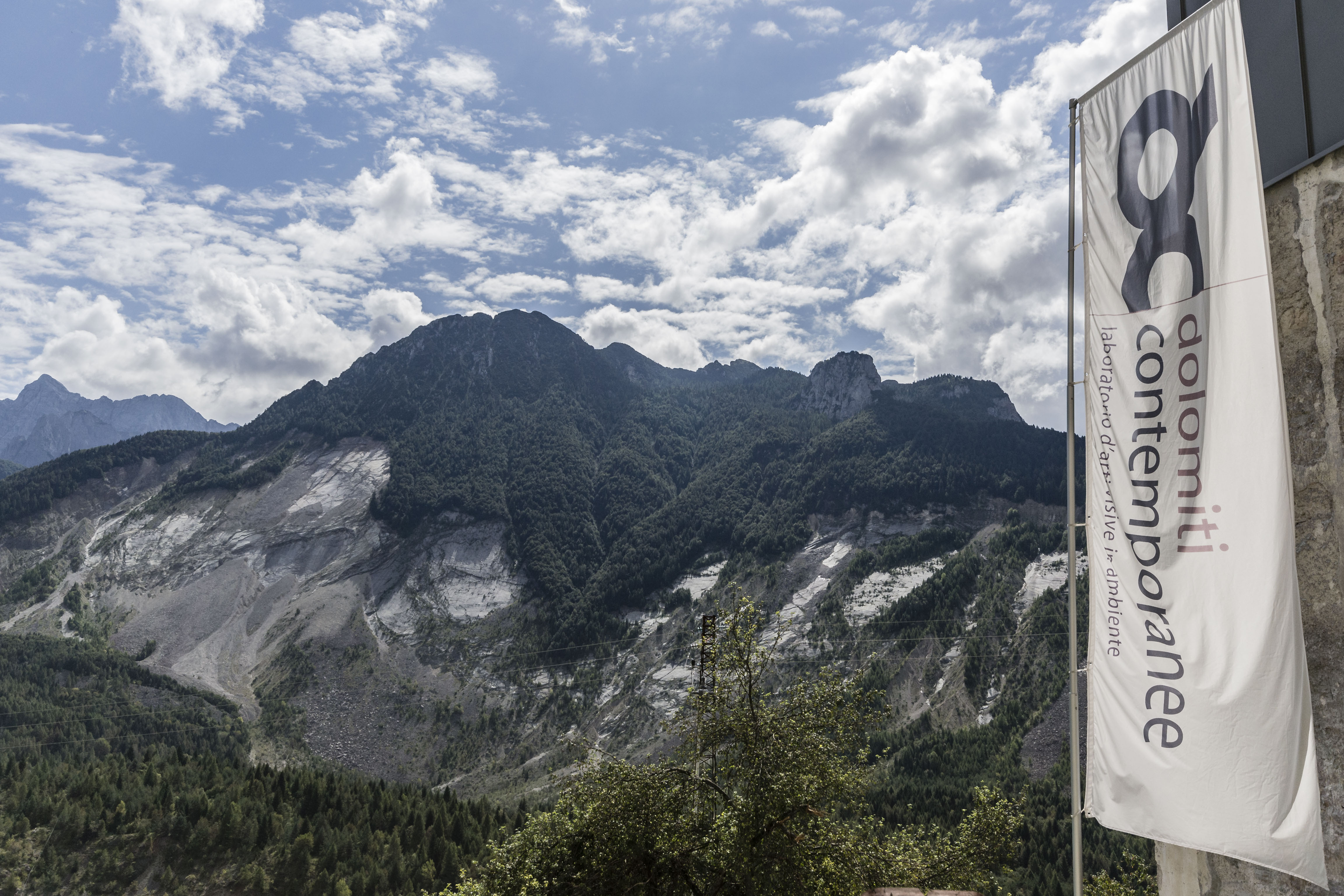
Tuesday, June 15th 2021, 2 – 4 PM, webinar panel:
two calls for vajont: fase _restart.
Vajont: [...]

